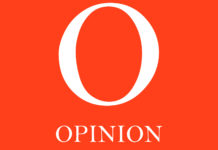Older generations of journalists honed their craft with pencil and paper before printing newspapers that, once they went out, could not be edited or retracted.
The younger generation instead writes for web and social media which can be edited and receive audience interaction immediately.
Web and social media changed the game for journalists. Instead of waiting for the paper to find the reader’s mailbox, the reader finds, or more often stumbles across the news.
Despite the pressure journalists face in this cycle, media companies thrive on the constant audience engagement and revenue that comes with it.
Unfortunately, news is a business in the United States, and media companies are constantly fighting to retain viewership and subscribers. Stories are weighted by what the target audience wants to see. Newsroom partnerships and citizen journalism have helped lower costs and more newsrooms have switched to a nonprofit model that requires lengthy processes to secure funding.
News is more accessible than ever before, but most audiences think the rise of social media and the web has led to a decline in objective journalism.
Donna Sybert, the Butler Eagle’s managing editor, still uses the terms “fair” and “balanced” instead of “objective” journalism and views using social media in reporting differently than some of her younger journalists. Her reporters use social media for research. They may see social media as a reliable source, but Sybert sees more rumor and innuendo that must be verified as they would information received via a police scanner.
“It’s almost like the old telephone (game),” she said. “Maybe what you heard at the end is not what you think.”
Bob Schieffer, most well-known for anchoring CBS News’ “Face the Nation” for 24 years, interviewed former editing manager of The Orlando Sentinel John Cutter in June 2016 after the Orlando shooting.
Cutter said social media has become a chat room with readers and viewers. Viewers want more than a word picture. They expect pictures, videos and graphics that show the current situation, so Cutter taught his staff to create visual content on their phones.
Social media helped Cutter’s staff get information they used to have to knock on doors to find.
Users posting on social media are often sharing their opinion and are more likely to interact with opinionated content. This medium can also make it difficult to tell the complete story. While a journalist strives for fair, balanced reporting, they may only get one side of the story at a time or only get the official statement.
As audiences continue to get their news from digital devices, young journalists have been tasked with figuring out how to turn fair, balanced print journalism into a more palatable, digital format for audiences while creating a brand for themselves.
H. Andrew Schwartz, the co-author of Schieffer’s book and chief communication officer at the Center for Strategic and International Studies, praised companies like Buzzfeed and Vox Media for how they crafted their brand and interact with their audience.
Buzzfeed and Vox Media use a combination of content and design to create an interface that feels good and “treats the social conversation as the front page rather than the website or print,” according to Ben Smith, a Politico writer who joined Buzzfeed. Each medium lends itself to a different type of content, so these companies tailor their content to each medium and audience. Since the medium and brand are younger, the audience is younger.
Opinion articles help create a brand voice, but Ben Schmidt, Tribune-Review’s deputy managing editor, said it can be difficult to add more opinion pieces because it could shift the entire brand to one side or the other.
There is no universal standard for how journalists should use social media. Some journalists use one profile for professional and personal purposes, and others separate them.
Other journalists like Justin Vellucci, a seasoned Tribune-Review reporter, voice their opinions in Tweets but exclude them from web content. Writers like him can inject their personality while keeping the content objective.
Most journalists agree that completely fair and balanced journalism does not exist. The angle a writer uses to tell the story automatically favors one side over the other. Readers enjoy a hero and villain in every story.
Newsworthiness and human interest can also be presented as biased. For example, when reporting on striking employees, the employees will be easier to access and have a more emotional story than the corporation.
Even though the exact definition is up for debate, objective journalism generally involves giving all sides equal exposure in the story, which also means including information that could sway public opinion.






